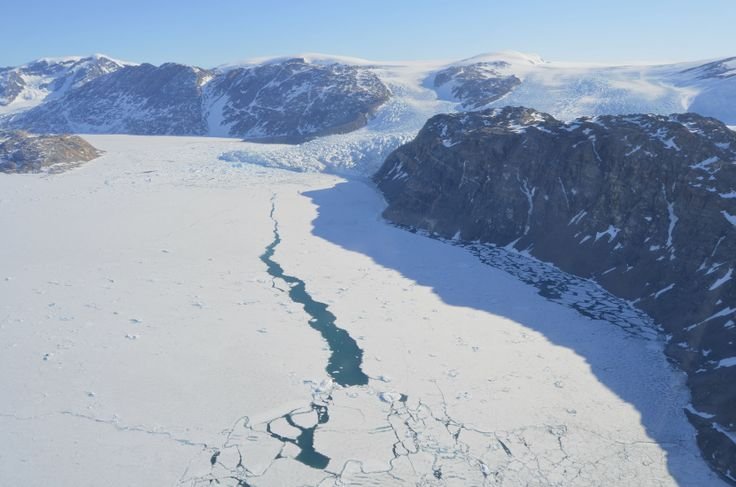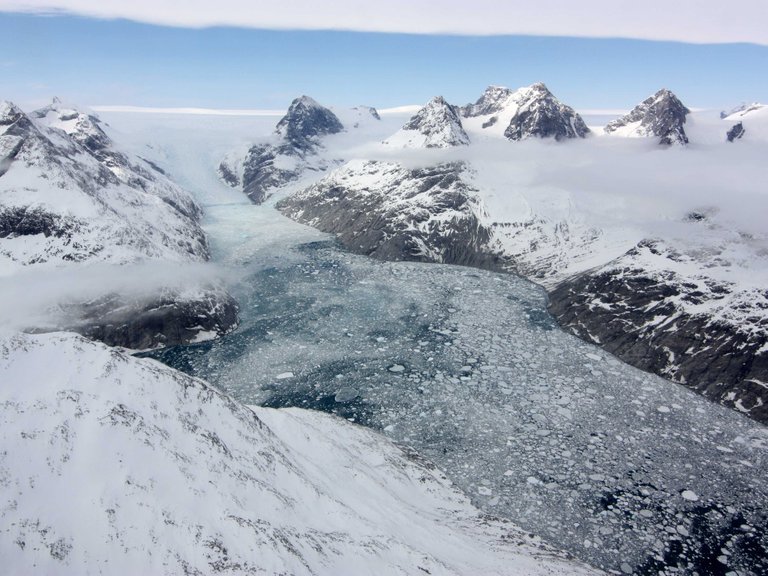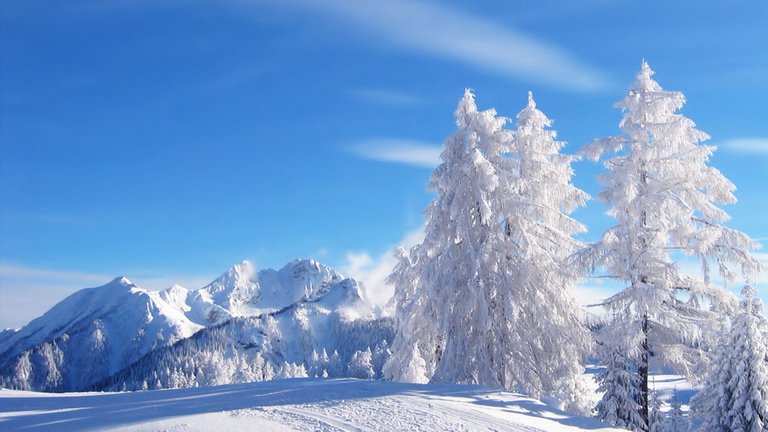
Greenland is the greatest island on Earth and the minimum thickly populated nation, with just around 57,000 occupants. The greater part of the possessed spots are found along the western drift; a thick ice sheet covers the inside of the nation. Researchers are developing amazingly worried that an Earth-wide temperature boost is dissolving the ice too rapidly.

Topography
Greenland sits in the North Atlantic Ocean, upper east of Canada. The island covers around 836,000 square miles (2.17 million square kilometers), or around three times the region of Texas. Just 158,000 square miles (410,000 square km) of that surface are sans ice.
One of Greenland's most conspicuous geographic highlights is its monstrous ice sheet, which covers more than 80 percent of the nation — around 700,000 square miles (1.8 million square km). The Jakobshavn Glacier is a vast valley ice sheet in west Greenland. It moves around 100 feet (30 meters) a day, making it one of the quickest moving ice sheets on the planet, as indicated by Smithsonian Ocean Portal. The Jakobshavn channels 6.5 percent of the Greenland ice sheet and creates around 10 percent of all the nation's ice shelves (around 4 billion tons of ice entering the ocean). It was likewise the wellspring of the ice sheet that sunk the Titanic.
The rest of the without ice arrive comprises of the island's beach front districts and is made principally of good countries. Mountain chains keep running along the nation's east and west drifts, with the most astounding point achieving 12,139 feet (3,700 m) at Gunnbjørn Mountain in the southeast.
Northern Greenland — the zone north of the Arctic Circle — encounters interminable sunshine, or the midnight sun, for two months in the mid year, and polar night, or unending dimness, in the winter. The Arctic Circle is a fanciful line that encloses the globe at 66 degrees, 34 minutes north. It denotes the scope above which the sun does not set on the mid year solstice and does not ascend on the winter solstice, as per the National Snow and Ice Data Center.
Government and individuals
Greenland is one of three constituents of the Kingdom of Denmark; the other two are Denmark and the Faroe Islands. Greenland is a self-sufficient division of the kingdom, with constrained self-government and its own particular parliament and head administrator.
Around 12 percent of Greenland's populace is Danish, and 88 percent is Inuit, the zone's indigenous individuals, as indicated by The World Factbook.
Around 33% of the island's populace lives in Nuuk, the biggest city and the capital. Around 66% of Greenland's spending income originates from Denmark, with the rest coming basically from angling, as per the British Broadcasting Corporation (BBC).
Gunbjörn Fjeld, some portion of the Watkins Mountains in southern East Greenland, is the nation's most astounding crest, at 2.3 miles (3.7 kilometers) above ocean level.

History
Greenland was first possessed around 4,500 years prior, by individuals who originated from what is currently Canada. Be that as it may, those occupants vanished around 3,000 years back for obscure reasons, as indicated by the site Countries and Their Cultures. Another Stone Age gathering, called the Dorset culture, tailed them. The Dorset individuals endured from around 600 B.C. to A.D. 200, preceding vanishing.
At that point, in the tenth century, the Thule culture, which had created kayaks, dogsleds and spears, spread crosswise over Greenland. Anthropologists concur that Greenland's cutting edge Inuits are plummeted from the Thule. The Kalaallit, indigenous Inuits who live on the island's western area, named the nation Kalaallit Nunaat (place that is known for the Kalaallit).
Additionally in the tenth century, Norse pioneers started to occupy the southern piece of the island. Norse viking Erik Thorvaldsson (Erik the Red), banished from Iceland for his dad's wrongdoing of homicide, cruised west and in 982 happened upon prolific valleys and a delightful fjord scene where he chose to settle. When he came back to Iceland four years after the fact, he enlightened everybody regarding this new land, calling it "the green land," in the expectation of drawing in more pilgrims. (Research demonstrates, be that as it may, that the island's atmosphere was hotter — and the island greener — than it is today, so the name was not so fantastical.)
In 986, Erik by and by left Iceland for Greenland, this time driving 25 ships, as per Greenland Guide. There were 500 men and ladies on board the vessels. Of the 25 ships, just 14 achieved Greenland.
The Vikings established Brattahlid and the two little towns of Vesterbygden and Østerbygden. Around the year 1000, the populace had stretched around 3,000, with 300 to 400 homesteads, as indicated by Greenland Guide. For around 500 years, the Vikings lived nearby the Inuit individuals.
At that point, the Viking people group appeared to vanish in the late fifteenth century. What happened remains a puzzle. A few people propose the Vikings surrendered to a small scale ice age or other cruel living conditions. They left behind numerous relics, be that as it may, giving hints to their living circumstances and lifestyle.
Europeans came back to Greenland in 1721, and Denmark guaranteed the island as a province in 1775. In 1953, another Danish constitution made Greenland a division of the Kingdom of Denmark, and in 1979, Greenland was conceded status as a particular country inside the kingdom.
Atmosphere
Without a doubt, today the name Greenland is a something of a misnomer, since 80 percent of the island is shrouded in ice. Along the north-focal drift, the atmosphere is ice, implying that the mid year temperatures float around solidifying (32 degrees Fahrenheit or 0 degrees Celsius), as indicated by Climatestotravel.com.
The atmosphere is somewhat milder (subarctic) around the south. In Nuuk, the most populated city situated in the south, the summers are icy, and the winters are frigid, cold, breezy and cloudy, as indicated by Weatherspark.com. The temperature in the city differs between 11 to 50 degrees F (less 11 to 10 degrees C) and seldom goes underneath less 1 degree F (short 18 degrees C) or over 55 degrees F (12 degrees C).
Since mugginess is low and Greenland is extraordinary compared to other nations on the planet for air quality, perceivability is brilliant. Indeed, even far away mountains look considerably nearer than they are. What's more, since the air is so dry, it doesn't feel as icy as one may anticipate.
Harbinger of environmental change
The Greenland Ice Sheet stretches out around 656,000 square miles (1.7 million square km), covering a large portion of the island of Greenland, or three times the region of Texas, as indicated by the National Snow and Ice Data Center. The Antarctic Ice Sheet covers about 5.4 million square miles (14 million square km). Both ice sheets are liquefying at a rate of around 1 millimeter (0.04 inches) every year. On the off chance that the whole Greenland Ice Sheet — which is around 9,840 feet (3 km) thick — were to soften, it would raise ocean levels by about 23 feet (7 m).
Researchers are likewise worried that hotter air and diminishing ice are permitting a more prominent number of dull green growth to develop on the ice. This green growth ingests a greater amount of the sun's warmth, consequently quickening the liquefying considerably more. [Related: The 'New Arctic': Thinning Ice Is Changing Ecosystem]

Creatures
Greenland is home to numerous types of well evolved creatures and winged creatures, including polar bears, reindeer, musk bulls, caribou, cold foxes, hawks, ptarmigan, bunnies, lemmings and the Arctic wolf, as indicated by VisitGreenland.com.
There are around 235 unique types of feathered creatures in Greenland. The majority of these are transient, with around 60 species reproducing on the island, as indicated by 10000birds.com. A portion of the more typical composes incorporate Arctic terns, white-followed falcons, northern fulmars, dark guillemots, normal eiders and shake ptarmigans.
The Arctic waters encompassing Greenland possess large amounts of whales, including the narwhal, humpback, sperm, pilot, blue, minke, beluga and blade whales. Seals are additionally to a great degree normal, with a populace of around 2 million. Walruses are frequently observed on the northern and eastern coasts. The Greenland polar bear chases seals and feathered creatures from the ocean ice year-round and here and there goes ahead shore to expend vegetation in the late spring. The bears for the most part don't rest amid winter.
The island additionally holds the world's biggest national stop, Northeast Greenland National Park, which is around 100 times bigger than Yellowstone National Park. Covering a region of 375,291 square miles (972,000 square km) with 11,184 miles (18,000 km) of coastline, the recreation center is home to various Arctic species. It highlights exceptional and emotional view, including the most noteworthy parts of the Northern Hemisphere's biggest ice top and the northernmost territory of arrive on Earth, as per VisitGreenland.com.
Because of its relative detachment, be that as it may, Northeast Greenland National Park isn't a national stop in the conventional sense, as indicated by Nationalparkstraveler.org. A visit to the recreation center requires a considerable measure of early arrangement. Not very many individuals live in the region — basically specialists and military faculty — and just Inuit seekers have consistent access to the recreation center. Because of the high quantities of Arctic creatures living here, different Inuit societies have made due in this bone chilling atmosphere for a huge number of years
Nice